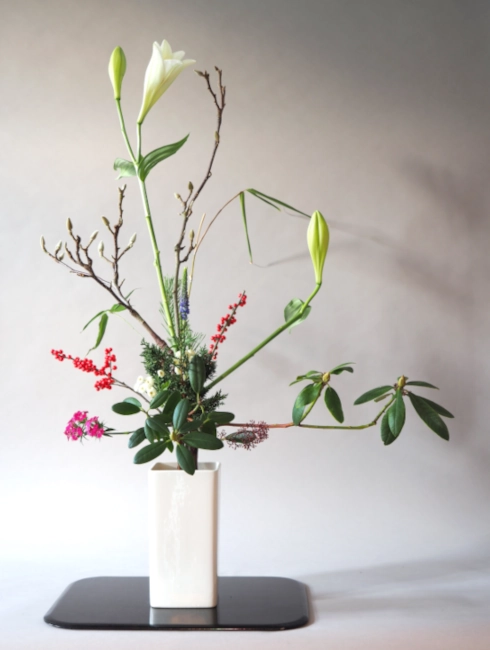RIKKA
Rikka was introduced in the Muromachi period (ca. 1336-1573) and is the oldest style of Ikebana. Through the use of different branches and plants, Rikka suggests the beauty of a whole natural landscape that is the result of the harmony of all things. Branches and twigs symbolise mountains, grasses and flowers symbolise water.
There are two styles of Rikka: Rikka Shôfûtai with a traditional form and Rikka Shimpûtai without a fixed form.
Rikka Shofutai
The Rikka style evolved by becoming larger and more complex. Rikka Shôfûtai is a style that became standard in the Meiji period. It consists mainly of seven or nine yakueda (main lines), expressing the natural beauty and dignity of plants through a complex and varied composition.




Rikka Shimpûtai
Rikka Shimpûtai was introduced in 1999 by Sen' ei Ikenobô to be shown also in modern spaces. In contrast to the regulated Rikka Shôfûtai, it is free of fixed forms and emphasises the movement of the plants. The emphasis in this form is on expressiveness. While it is based on the composition and sense of beauty of traditional Rikka, it is characterised by the expansiveness, freshness and brilliance of the floral materials. The use of different types of flowers and unexpected or contrasting combinations is intended to express brightness, clarity and distinctiveness.



